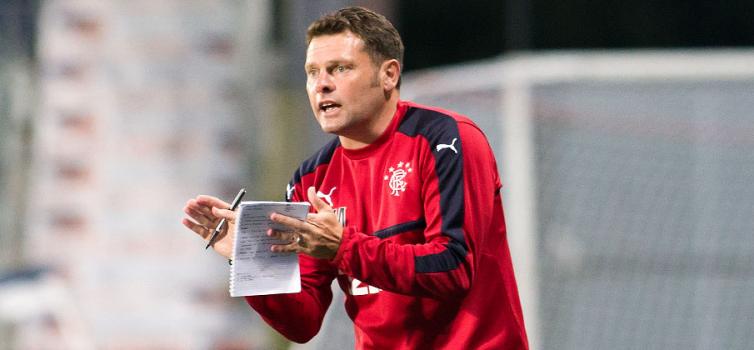Graeme Murty: How Rangers use Tactical Periodisation

Murty has been Rangers caretaker manager since the end of October
Written by Simon Austin — December 5, 2017
Graeme Murty, the caretaker manager of Rangers, told TGG how the club uses Tactical Periodisation:
Graeme Murty: Our old model was tactical, technical, physical and psycho-social. We’ve changed that to ball, game, body and mind - the four pillars. And we’ve got four moments in a game – in possession, out of possession, transition out of possession and transition to attack. Within every training session all four of those elements have to be hit. There are individual player targets for the session as well.
We plan in 12-week blocks, with a six-week plan that is repeated. Week one is build, two is finish, three is transition to defend, four is setting traps, five is final-third defending, and six is transition to attack.
Take week one, when our objective is build. We have topics within that – breaking lines, changing the point of attack - and the counter-topic will be setting traps for the team out of possession.
With 'finish', in week two, it’s about different ways of getting into the final third and scoring goals versus final third defending. Each day within the week will have a specific theme and focus: match day plus one, plus two and so on.
In the Under-20s programme, we generally play on a Tuesday. So Wednesday is a regeneration day; Thursday is match review, which we call restart, which will identify tactical and technical themes we want to work on – team and individual; Friday would be strength and ‘Rangers players day’, with smaller areas, smaller numbers, and high-intensity and continuous work.
Saturday is 'Rangers team day' – full capacity, bigger areas, bigger numbers, longer times, looking at high-intensity distance and sprint distance, looking at how we want our teams to play, what our patterns are, what our style of play is. Sunday is a day off to recharge, and Monday is a match prep day working on specific areas we want to see in the game.
We wanted to have a block of three days, which we call 'acquisition days', to get some really detailed work into them. So those are typically the Thursday, Friday, Saturday, as I've outlined above.
We will individualise our player target areas physically - how much high-speed distance we want from them. Your specific targets will vary depending on your position. The player targets will be what you’re going to focus on for the next six weeks.
We have a coach who leads the session, looking at the session objectives, making sure those are hit, and a shadow coach who will look at the opposite theme, making sure the team out of possession is working in the right way. He will give detail individually for specific stuff they are working on at that time.
We are in the process of making a playbook – each theme will have a dozen practices, with diagrams, descriptions and video. All the coaches are encouraged to experiment and feed back. They can work with it and improve it and feed back for the technical group.
Every club has a periodisation plan, even if it might be labelled and displayed differently. It’s basically a plan for the year with the technical, tactical and physical you want to work through. We use periodisation and we like it, but you could just as easily call it a curriculum. Our Tactical Periodisation is as integrated as I’ve seen - it’s about making sure we hit as many of those objectives as we can on a regular basis.
The big thing for us is what’s the next big concept to come along? We want to be at the forefront of that. There is an open-mindedness here about how to change and improve.
PART ONE: The man who taught Eddie Jones about Tactical Periodisation
PART THREE: How Wales use Tactical Periodisation




-1.png)





